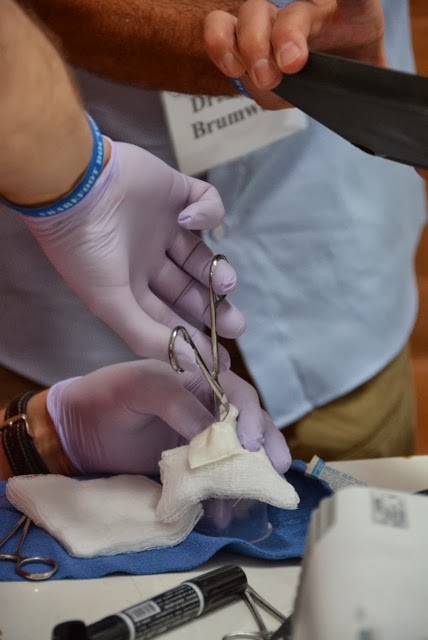The Barefoot Dr. training program has come to a close for
2014. All the instructors have returned safely home and the students are well
on their way. It was a very successful program that was able to cover the
entire book “Where There Is No Doctor,” a week of CHE (Community Healthcare
Education) training, and a wealth of additional knowledge from all the
instructors. In addition to
medical skills they attended night classes on how to use computers and the
internet. For many of the students it was the first time they had touched a
computer, not to mention the internet. As Burma develops, computer skills may
prove to be just as life changing as the medical skills. The students also received a starter
kit of medicine including many potentially life saving drugs. Their medical
kits contain 23 of what we believe to be the most needed medicine in their
areas, medical equipment such as stethoscopes and blood pressure cuffs, digital
cameras and log books to record their work. They also received many other
useful devices for the treatment of their patients and a backpack to carry it
all. We fully expect that this group will save lives this first year. Not only
by treating life threatening illness but also in knowing when to advise patient
to make the long trek to the closest hospital and in preventative medicine.
This program emphasizes that in the long run they will save many more lives by
community healthcare development and preventative medicine than by simply
treating those already sick. We cannot wait to see them all again next year and
hear their stories!
Putting this program on is a team effort and it would not be
successful without all those who support it locally and globally. Our trainers
came from all around the world including multiple areas of the USA, Canada,
Thailand, India, and New Zealand! The financial and equipment donors are from
hundreds of individuals, a handful of churches, and a few medical companies around
the world. Of course, the students came from all across Burma in some of the most
remote and under-served areas left on the planet. They included many different
ethnic groups all working together for a greater good. Their Christian belief
in God gives them incredible dedication and drive to do this important work
often times at great sacrifice to themselves and their families in the form of
time, travel, and physical effort.
Fundraising is always stressful and this year it looked like
there would not be enough to get it all done. However, as providence would have
it, in the last week of the program some extra funds came in. They were just
enough to complete the necessary tasks. It was far less than we had originally
hoped for but thanks to some incredible cost saving efforts from our Thailand
and Burma team, the program ended up fully funded!
The plans for the second year of this three-year program
have already begun. A start date is set for mid January 2015. We hope to have
enough funds to include the very necessary dental extraction training in the
next class. Please pray for the success of the Barefoot Dr. students in the
field and for next year’s program.
Thank you all for support in so many different ways and may
God Bless you.
Rick Astone




.JPG)














.JPG)






























